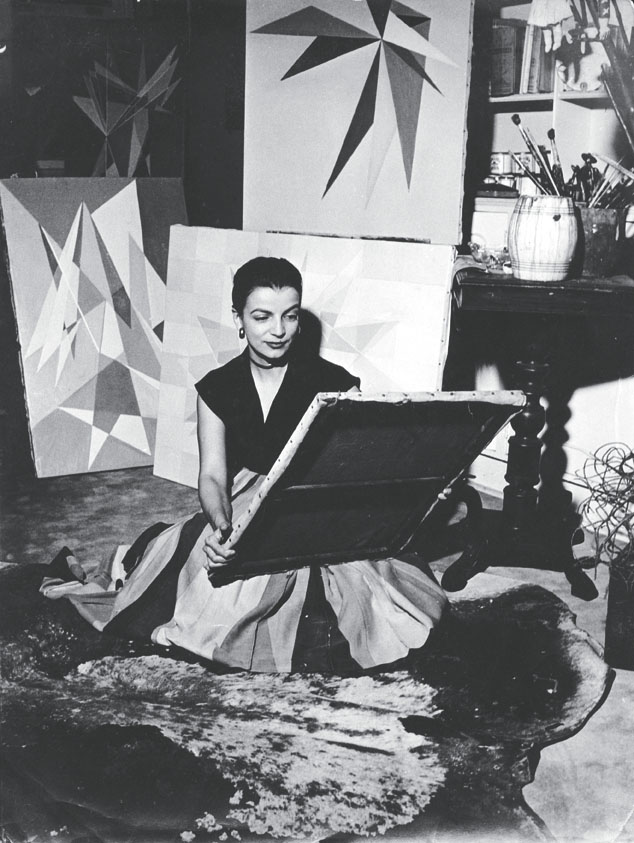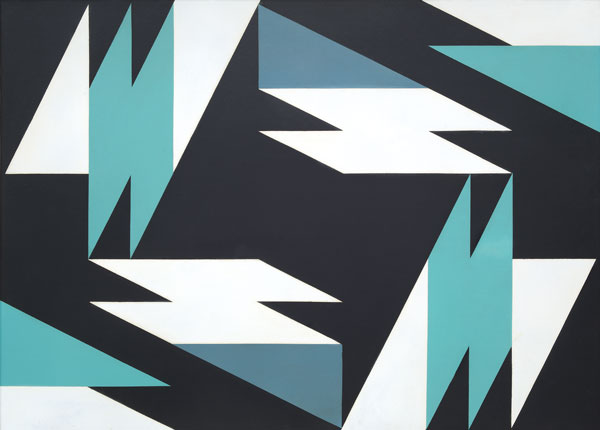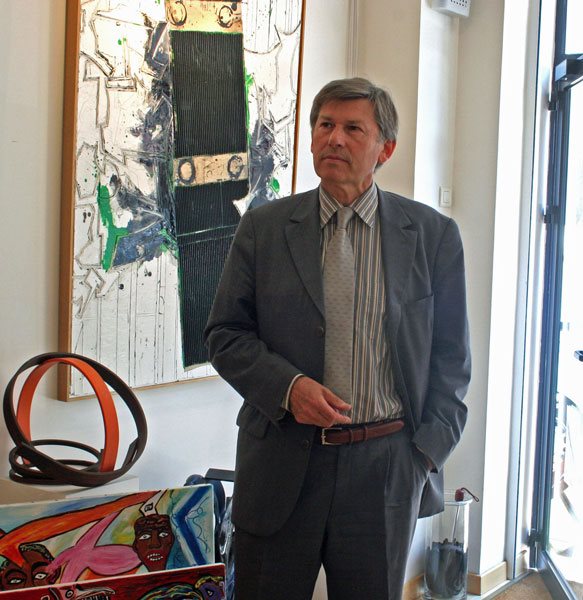Lygia Clark: Painting as an Experimental Field, 1948–1958
March 6, 2020 - May 24, 2020Museo Guggenheim Bilbao
Avenida Abandoibarra, 2
48009 Bilbao
https://www.guggenheim-bilbao.eus/en
Telephone: +34 944 35 90 00 & +34 944 35 90 80Following the recommendations issued by health authorities and the directions of the Basque Government and the Provincial Council of Biscay, the Guggenheim Museum Bilbao will close temporarily to visitors effective March 14 until further notice as a way to contribute to contain the spread of COVID-19.
For the Museum, the safety of our visitors, our staff, and our collaborators is a top priority. In this context and as a precaution, all programs and activities have already been canceled. The Museum’s website offers timely information of any changes that may occur
While the Museum is closed to visitors, staff members continue working internally in order to accompany the public in these challenging times, increasing the content about the art program and offering it through our web and social media.
A pioneer in abstraction, Lygia Clark (b. 1920, Belo Horizonte, Brazil; d. 1988, Rio de Janeiro, Brazil) was a major artist of the second half of the twentieth century. Lygia Clark: Painting as an Experimental Field, 1948–1958 presents a reexamination of Clark’s crucial formative years from 1948 to 1958, when she was experimenting between figuration and abstraction to articulate the compelling visual language that defined her mature production. Along with a pertinent representation of her early figurative work, this exhibition assembles paintings from major series created during this early period to provide a fundamental overview of the first decade of Clark’s artistic career.
Viewing painting as an “experimental field,” a phrase from a keynote lecture given by the artist in 1956, Clark sought to redefine the medium by pushing the boundaries of traditional painting. Dedicating herself to art without formal training, she embedded herself within the artistic milieu of Rio de Janeiro in the late 1940s and participated in seminal artistic movements, such as Concrete art and geometric abstraction, throughout the 1950s. This focused exhibition traces Clark’s artistic evolution in three structured historical sections: “The Early Years, 1948–1952;” “Geometric Abstraction, 1953–1956;” and “Variation of Form: Modulating Space, 1957–1958.” Each chapter addresses Clark’s most significant ideas and provides an in-depth representation of her artistic development through a concise selection of works.
This presentation of Lygia Clark’s early practice debuts on the centenary anniversary of the artist’s birth, bringing a renewed attention at an international level to a significant postwar Latin American female artist. The museum is thankful to the Lygia Clark Cultural Association, Rio de Janeiro, and the artist’s heirs for their tremendous support of the exhibition.
Curator: Geaninne Gutiérrez-Guimarães
Lygia Clark
The Violoncellist (O Violoncelista), 1951
Oil on canvas 105.5 x 81 x 2.7 cm
Private collection
© Courtesy of “The World of Lygia Clark” Cultural Association
X.2017.23
 |
| Lygia Clark Composition (Composição), 1951 Oil on canvas 105 x 81 cm Colección Patricia Phelps de Cisneros © Courtesy of “The World of Lygia Clark” Cultural Association X.2017.17 |
|
Following its presentation at the Guggenheim Museum Bilbao, the exhibition will travel to the Peggy Guggenheim Collection, Venice from June 27 through September 28, 2020. Lygia Clark: Painting as an Experimental, 1948–1958 presents a reexamination of Clark’s crucial formative years. In this volume, readers can delve into the artist’s production from this period, when Clark was experimenting between figuration and abstraction to articulate a language that defined her mature works. The essays by Geaninne Gutiérrez-Guimarães—curator of the exhibition—, Adele Nelson, and Paulo Miyada, as well as a chronology compiled by Julia M. Vázquez and selected bibliography offer an overview of the first decade of Clark’s artistic career. |
 |
|
Lygia Clark |
The Artist Lygia Clark |
 |
| Lygia Clark was born in Belo Horizonte, Minas Gerais, Brazil in 1920 and received informal artistic training in the late 1940s by Brazilian artists Roberto Burle Marx and Zélia Ferreira Salgado in Rio de Janeiro. By 1950 she traveled to Paris to continue her artistic training with modern masters Fernand Léger and Árpád Szènes. She held her first exhibition, L. Clark-Ribeiro (1952), at the Institut Endoplastique, Paris, where she exhibited her early experiments with abstraction and constructive forms in two-dimensional works. Upon her return to Brazil later that year, she held her first solo show, Lygia Clark 1950-1952, at the Ministério da Educação, Rio de Janeiro. Recognized as an emerging artist, Clark began to participate in important regional group exhibitions, including the first Exposição Nacional de Arte Abstrata (1953) and the Bienal de São Paulo (1953). |
 |
|
Lygia Clark |
|
In 1954, Clark became involved with the vanguard collective, Grupo Frente, along with her contemporaries Aluísio Carvão, Hélio Oiticica, and Lygia Pape, among others, and participated in the group’s groundbreaking exhibitions through 1956. Following the tenets of Geometric Abstraction, her work from this period embraced a rigorous representation of geometric form, bold colors, and a sense of order. She participated in other major exhibitions, such as the Salão Nacional de Arte Moderna (1956 and 1957), the first Exposição Nacional de Arte Concreta (1957), and the Bienal de São Paulo (1957). Towards the end of the 1950s, Clark’s aesthetic and philosophical concerns coincided with those of Neo-Concretism, a Brazilian artistic movement established in 1959 that rejected the impersonal and objective quality of Concrete abstraction. The Neo-Concretists conceived of their works as existing between art and life and as experiences in the public realm. A founding member, Clark participated in the Exposição Neoconcreta in 1959, and created three-dimensional work that fostered the active participation of the spectator in the artwork. |
 |
|
Lygia Clark |
| From 1964 through the early 1970s, Clark resided in Paris and created a series of unconventional works paralleling her lengthy psychoanalysis with psychiatrist Pierre Fédida, which led her to conceive the idea of a therapeutic form of art. These investigations coincided with groundbreaking events in the world, such as the events of May 1968 in France and the rise of a new generation of Brazilian artists involved in movements such as Nova Objetividade (New Objectivity) and Tropícalia. Clark’s works from this period incorporate elements that stimulate the body through eyes, ears, and nose as a way of integrating the senses without privileging the visual. Her artistic investigation from this period embraced a therapeutic performance that aimed to activate subjective and corporal awareness. After 1978, during her last stages of her career, Clark solely dedicated herself to her psychoanalytic practice. She died in Rio de Janeiro in 1988. |
Geometric Abstraction, 1953–1956 |
 |
|
Lygia Clark |
| Upon Lygia Clark’s return to Rio de Janeiro in August 1952, Concrete art in Brazil was beginning to take form, first with the establishment of Grupo Ruptura (Rupture Group) in São Paulo in 1952, and later with Grupo Frente (Front Group) in Rio de Janeiro in 1954. Clark joined the latter group along with her contemporaries Aluísio Carvão, Willys de Castro, Hélio Oiticica, Lygia Pape, and Ivan Serpa. Like their counterparts in São Paulo, Grupo Frente absorbed the ideologies of European Concrete art and adhered to strict principles of pure form and objectivity as opposed to the naturalism and figuration prevalent in Brazilian early modernism. In particular, Clark embraced a unique geometric aesthetic in dialogue with the rise of modern geometric abstraction in Brazil and participated in the group’s exhibitions between 1954 and 1956. |
 |
|
Lygia Clark |
|
This section features Clark’s precise geometric compositions of 1953 and other major series that propelled her to challenge the spatial conventions of the plane, such as Discovery of the Organic Line (Descoberta da linha orgânica, 1954) and Breaking the Frame (Quebra da moldura, 1954). Additionally, this section showcases three existing architectural models, Maquettes for Interior (Maquetes para interior, 1955), which exemplify the artist’s concept of a dynamic living space. Partly under the influence of her earlier teachers Fernand Léger and Roberto Burle Marx, these maquettes highlight Clark’s artistic investigations between art and architecture, which later evolved into easel paintings of flat, planar, and modular structures in her series Modulated Surfaces (Superfícies moduladas, 1955). By 1956, Clark embraced a more vibrant, colorful palette with abstract compositions comprising zigzag shapes, diagonal forms, sharp angles, and rhythmic patterns. |

















